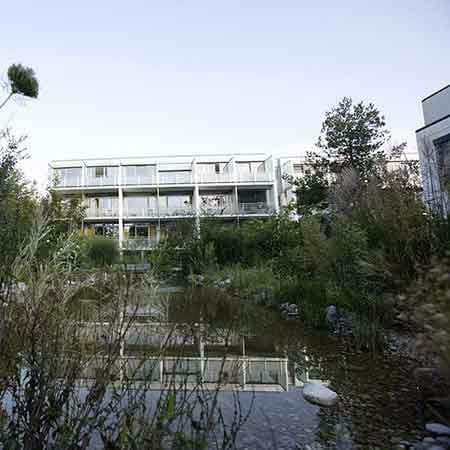Testicular abscess is a purulent cavity in the corresponding organ. The pathology usually develops as a complication of epididymitis, which is an inflammation of the epididymis. It is manifested by pain and swelling in the scrotum. Diagnostics involves the use of ultrasound and MRI. Treatment depends on the size, location of the abscess, and the severity of the inflammatory process. Doctors use percutaneous drainage, surgical incision of the abscess, and if more than 50% of the parenchyma is affected, they perform surgery to remove the inflamed testicle with the epididymis.
Content
- Causes
- Diagnostics
- Conservative therapy
- Percutaneous abscess drainage
- Surgical abscessotomy
- Testicle removal surgery
- Treatment in Europe with Booking Health at an affordable price
Causes
Typically, a testicular abscess causes epididymitis, which is the most common cause and accounts for 80% of cases. In turn, epididymitis can be caused by nonspecific bacterial inflammatory processes or sexually transmitted infections.
The risk of the disease is increased with:
- Age over 40.
- HIV.
- Cancer.
- Diabetes mellitus.
If the patient was previously operated on for any scrotal diseases, the risk of developing testicular abscess against the background of epididymitis is higher. The development of pathology is facilitated by untimely or inadequate treatment, as well as its absence.
Other possible causes of pathology are as follows:
- Testicular torsion.
- Infection from other organs through the blood (pneumonia, septic arthritis, endocarditis).
- Scrotal trauma.
- Radiation therapy.
- Complications of surgical interventions and invasive medical procedures (for example, testicular biopsy).
Diagnostics
Scrotal pain and swelling are the main symptoms, but they are nonspecific. Pain and swelling are also common for epididymitis, which may cause an abscess. But since this disease is rare, doctors do not always suspect the presence of a purulent cavity, and many patients remain under-examined.
As a rule, the doctor is alarmed by the lack of positive dynamics, despite the optimal antibiotic therapy. If the patient suffers from scrotal pain and swelling for 5-7 days, this is a reason to do an ultrasound scan.
With the help of the ultrasound scan, a doctor can see a purulent cavity in the scrotum. Nonetheless, it cannot be reliably distinguished from a testicular tumor. Therefore, dopplerometry and high-resolution contrast-enhanced ultrasound are additionally used. Doctors determine blood flow parameters. In the testicle that is inflamed, the blood flow is increased, but there is no blood circulation directly in the purulent formation itself.
In doubtful cases, MRI is used. This diagnostic option is used if the ultrasound scan was not informative enough, if the doctor has doubts about the diagnosis, when the clinical picture does not correspond to the ultrasound data, or it is necessary to choose the optimal method of surgical treatment.
A CT scan is used less frequently. Basically, it is done in the presence of contraindications to MRI and insufficient information content of ultrasound. The study is carried out with contrast enhancement. The CT scan allows distinguishing a tumor from an abscess by the accumulation of contrast agent: the neoplasm intensively accumulates the contrast agent, while the abscess does not accumulate it at all.
Radionuclide diagnostic methods are very rarely used. Like CT scanning, it has not become widespread due to radiation exposure, which is highly undesirable for the reproductive system.
Conservative therapy
Acute testicular abscess necessarily requires surgical treatment, while conservative therapy only complements the surgical intervention.
The disease can go away even without surgery. However, such cases are rare, and much more often patients develop complications or pathology becomes chronic.
Conservative treatment methods are as follows:
- Pain relievers.
- Antibiotics.
- Scrotal cooling.
- Anti-inflammatory therapy.
- Detoxification.
- Symptomatic treatment.
Since the abscess is caused by bacteria, antibiotics are the basis of conservative therapy. They are prescribed to be used immediately after the diagnosis is established, and their intake is continued after the surgical procedure and for another 3-4 days after the normalization of body temperature and the cessation of the discharge of pus from the drainage tube.
The chronic abscess, in contrast to the acute one, is an abscess covered with a dense capsule. If it takes up less than a third of the testicle, and the intoxication syndrome and local symptoms are mild, doctors resort to conservative management of the patient. He receives antibiotics to suppress infections, physiotherapy, enzymes, and anti-inflammatory drugs. Gradually, scar tissue forms at the site of the abscess.
Percutaneous abscess drainage
Whenever possible, doctors abroad use minimally invasive procedures to treat testicular abscess. Instead of the surgical intervention to remove the abscess or the entire testicle with the epididymis, a drainage procedure can be used.
The essence of the method is that the doctor inserts a needle into the purulent cavity under the ultrasound guidance. A guidewire is inserted through it, and a drainage tube is installed along the guidewire after the channel dilation. Pus flows down it. The tube remains in the wound during the entire treatment period. Antiseptics are periodically administered through it in order to kill bacteria. The patient is in the hospital for several days and receives antibiotics to suppress the infection.
The advantages of this approach include:
- Minimally invasive manipulation instead of surgery.
- Fast recovery.
- Maximum preservation of the testicular parenchyma, which is important for maintaining the normal levels of male sex hormones and reproductive function in young men.
- Low risk of complications.
- With the correct selection of patients, the outcomes of the procedure are comparable to those of surgery.
Surgical abscessotomy
A standard organ-preserving surgery for testicular abscess removal involves making an incision in the scrotum. The doctor cuts the skin, the tunica albuginea, removes the abscess and leaves drainage tubes for the inflammatory fluid to drain.
Organ-preserving surgery is usually resorted to in the following cases:
- Infectious disease has spread to no more than half of the testicle.
- Decreased fertility is highly undesirable for the patient with an abscess.
- The patient suffering from an infection has only one testicle.
The doctor strives to preserve as much of the testicular parenchyma as possible. In this case, the process of spermatogenesis is restored and the production of hormones is normalized. However, the suffered infectious disease always has after-effects: part of the parenchyma is nevertheless destroyed, and the result of inflammation and surgical treatment sometimes becomes obstructive infertility due to the impaired patency of the vas deferens.
Testicle removal surgery
In 50% of cases, the testicle and epididymis must be removed. This is the most reliable way to cure the infectious disease. The testicle is a paired organ, therefore, after the removal of one of them, the reproductive function is preserved, although it worsens. A decrease in the production of male hormones is also possible. If the concentration of testosterone in the blood decreases significantly, then patients receive replacement therapy. Testosterone preparations are administered parenterally or are used in the form of patches that are attached to the skin and gradually release the active ingredient.
The surgical intervention is minimally traumatic and does not require long-term rehabilitation. It can be performed through the inguinal or scrotal approach. After the patient was operated on, he would spend several days in the hospital, receive antibiotics and anti-inflammatory drugs in order to relieve pain and swelling.
It is important to carry out surgical treatment of the testicle that is affected by acute abscess as early as possible in order to avoid complications. The timely removal of the organ avoids sepsis, which develops in 5% of patients with this disease.
Treatment in Europe with Booking Health at an affordable price
To undergo testicular abscess treatment in one of the European hospitals, you can use the services of the Booking Health company. On our website, you can find out the cost of treatment and compare prices in different medical centers in order to book a medical care program at a favorable price. Treatment in European hospitals will be easier and faster for you, and the cost of treatment will be lower.
You are welcome to leave your request on the Booking Health website. Our specialist will contact you and provide a consultation on treatment in Europe. The Booking Health company will fully organize your trip to another country. We will provide the following benefits for you:
- We will select the best European hospital, whose doctors specialize in the treatment of testicular abscess.
- We will solve the problem of the language barrier, and we will also provide communication with the doctor of the European hospital.
- We will reduce the waiting time for the medical care program. You will undergo treatment on the most suitable dates.
- We will reduce the price. The cost of treatment in Europe will be lower due to the lack of overpricing and additional coefficients for foreign patients.
- We will take care of all organizational issues: we will draw up documents, meet you abroad and take you to the hospital, book a hotel, and provide interpreting services.
- We will prepare a program and translate medical documents. You do not have to repeat the previously performed diagnostic procedures.
- We will help you keep in touch with doctors after the completion of treatment in Europe.
- We will organize additional medical examinations and treatment in European hospitals.
- We will buy medicines abroad and forward them to your native country.
Your health will be in the safe hands of the world's leading doctors. The Booking Health specialists will help reduce the cost of treatment, organize your trip to a European hospital, and you can fully focus on restoring your health.
Authors:
The article was edited by medical experts, board-certified doctors Dr. Vadim Zhiliuk and Dr. Sergey Pashchenko. For the treatment of the conditions referred to in the article, you must consult a doctor; the information in the article is not intended for self-medication!
Sources:
National Center for Biotechnology
Medical News Today
Medscape
















